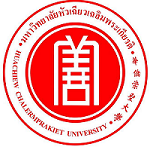Please use this identifier to cite or link to this item:
https://has.hcu.ac.th/jspui/handle/123456789/3536Full metadata record
| DC Field | Value | Language |
|---|---|---|
| dc.contributor.author | Lanthom Jonjoubsong | - |
| dc.contributor.author | Nathaporn Thammabunwarit | - |
| dc.contributor.author | Kitti Lertkamonrak | - |
| dc.contributor.author | ลั่นทม จอนจวบทรง | - |
| dc.contributor.author | ณธภร ธรรมบุญวริศ | - |
| dc.contributor.author | กิตติ เลิศกมลรักษ์ | - |
| dc.contributor.other | Huachiew Chalermprakiet University. Faculty of Business Administration | en |
| dc.contributor.other | Huachiew Chalermprakiet University. Faculty of Business Administration | en |
| dc.contributor.other | Huachiew Chalermprakiet University. Faculty of Business Administration | en |
| dc.date.accessioned | 2025-01-19T03:10:20Z | - |
| dc.date.available | 2025-01-19T03:10:20Z | - |
| dc.date.issued | 2015 | - |
| dc.identifier.citation | International Proceedings of Management and Economy IPEDR vol. 84 (2015) IACSIT Press, Singapore : 59-66 | en |
| dc.identifier.uri | https://has.hcu.ac.th/jspui/handle/123456789/3536 | - |
| dc.description | สามารถเข้าถึงบทความฉบับเต็ม (Full Text) ได้ที่ : https://scholar.google.com/citations?view_op=view_citation&hl=en&user=I_GNahkAAAAJ&citation_for_view=I_GNahkAAAAJ:d1gkVwhDpl0C | en |
| dc.description.abstract | This study seeks to draw a plausible human capital creation model for Indigenous Knowledge (IK). From a review of the literature on human capital, human capital creation or investment and knowledge transfer, the human capital creation model proposed is based on the indigenous knowledge transfer model. This is because indigenous knowledge has specific characteristics and specific ways of creation and transfer. It is transferred and created based on oral transmission and informal methods within local environments and cultures. Thus, IK human capital creation has specific ways of creation or investment that differ to general HC creation. The IK human creation model is proposed with two main processes; information and resource implantation, and learning processes based on informal and daily life activities. The first process is associated with knowledge transmission and knowledge acquisition which focus on oral transmission from local people and family activities. Secondly, the learning processes for IK are focused on informal education; observing and practicing at school and in the community environment. The model is proposed on the basis of three propositions which are generated about the processes of IK transfer to support HC creation. This study has been conducted with action research in a community in Sanamchaikate district of Chacheonsao province in the east-central region of Thailand. This is because this community is vigorous in IK (indigenous vegetable knowledge) transfer to a younger generation. | en |
| dc.language.iso | en_US | en |
| dc.subject | Human capital | en |
| dc.subject | ทุนมนุษย์ | en |
| dc.subject | Indigenous vegetables -- Thailand (Eastern) | en |
| dc.subject | ผักพื้นบ้าน -- ไทย (ภาคตะวันออก) | en |
| dc.subject | Local wisdom | en |
| dc.subject | สารสนเทศท้องถิ่น | en |
| dc.subject | ภูมิปัญญาชาวบ้าน | en |
| dc.subject | Knowledge management | en |
| dc.subject | การบริหารองค์ความรู้ | en |
| dc.subject | Sanamchaikate (Chacheonsao) | en |
| dc.subject | สนามชัยเขต (ฉะเชิงเทรา) | en |
| dc.title | Use of Knowledge Transfer Model to Create Human Capital in the Area of Indigenous Knowledge for a Young Generation | en |
| dc.type | Article | en |
| Appears in Collections: | Business Administration - Articles Journals | |
Files in This Item:
| File | Description | Size | Format | |
|---|---|---|---|---|
| Use-of-Knowledge-Transfer-Model-to-Create-Human-Capital.pdf | 62.96 kB | Adobe PDF | View/Open |
Items in DSpace are protected by copyright, with all rights reserved, unless otherwise indicated.
